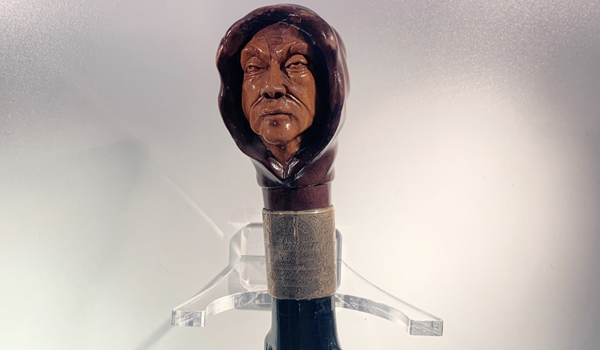Jack the Ripper makes an ‘appearance’ at Ryton
The only reported facial composite of notorious serial killer Jack the Ripper, which was carved into the handle of a walking cane, has been discovered in the College of Policing archives.
Almost as mysterious as Jack the Ripper’s identity, the whereabouts of this cane has been a puzzle for years following the closure of Bramshill Police Staff College in 2015 where it was originally displayed.
Two staff members were recently searching through the College of Policing archives when they came across a number of policing memorabilia artifacts which had been moved into storage after the closure of the Bramshill site and discovered the cane among them.
It is now being displayed for staff and delegates at the college’s Ryton police training centre alongside original Police News cuttings about the Ripper murders.
The walking cane was originally given to Chief Inspector Frederick Abberline by his team in 1888 at the conclusion of his most infamous case, the Whitechapel murders, which were committed by Jack the Ripper and still remain unsolved.
Chief Insp Abberline spent a number of years working his way up through the ranks in the Metropolitan Police Service, solving crimes in the East End and becoming the highest-ranking chief inspector at the Criminal Investigation department of Scotland Yard.
Antony Cash, content creator at the College of Policing, said: “Finding this cane was an exciting moment for us.
“Jack the Ripper is one of the biggest and most infamous murder cases in our history and his crimes were significant in paving the way for modern policing and forensics as it caused police to begin experimenting with and developing new techniques as they attempted to try and solve these murders, such as crime scene preservation, profiling and photography.
“This walking cane is such a fascinating artefact, which represents such a historically significant time in policing, and it’s amazing that we can put it out on display here in Ryton, alongside the original newspaper cuttings, so that our officers can see first-hand how far we’ve advanced in policing since then.”


